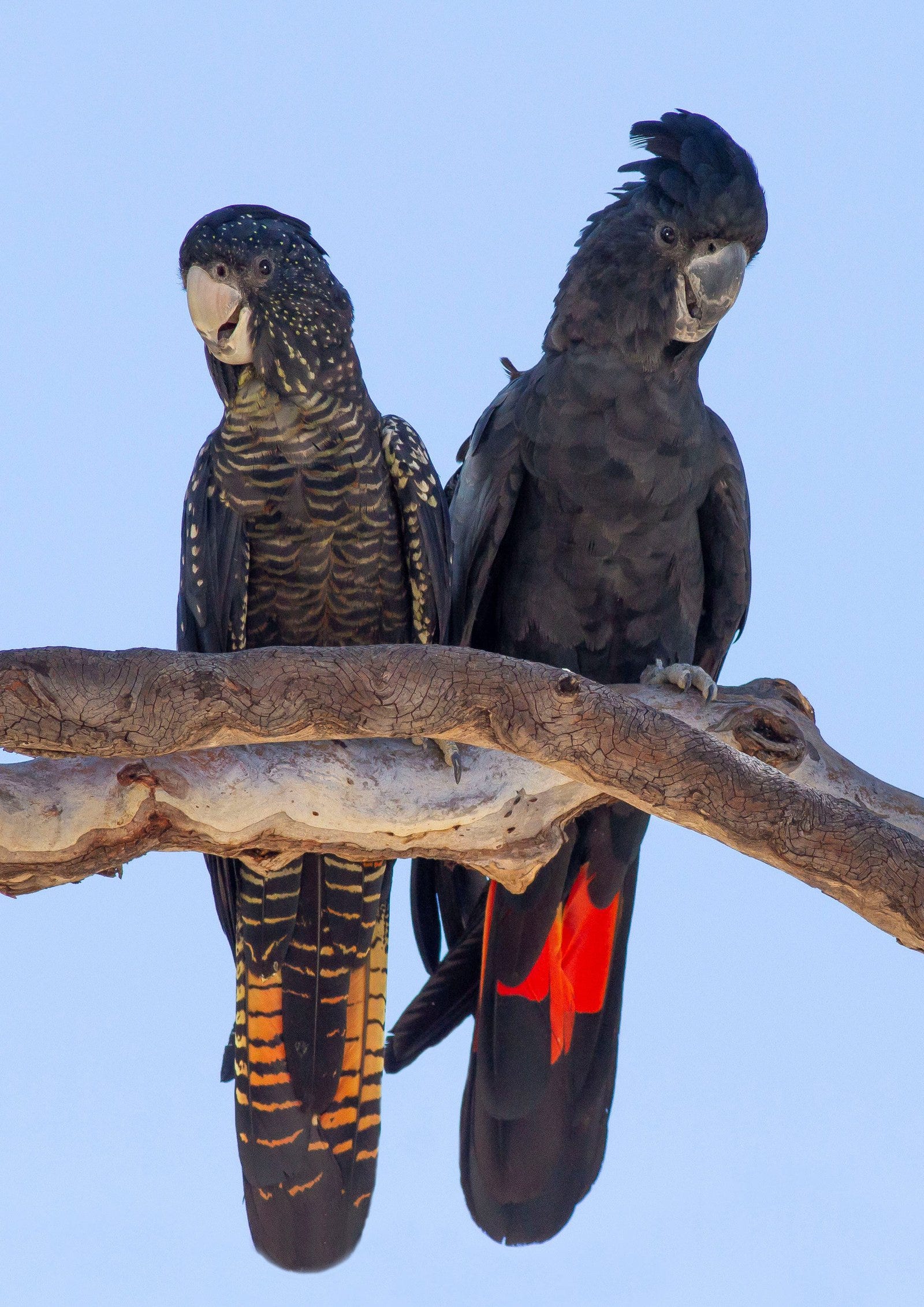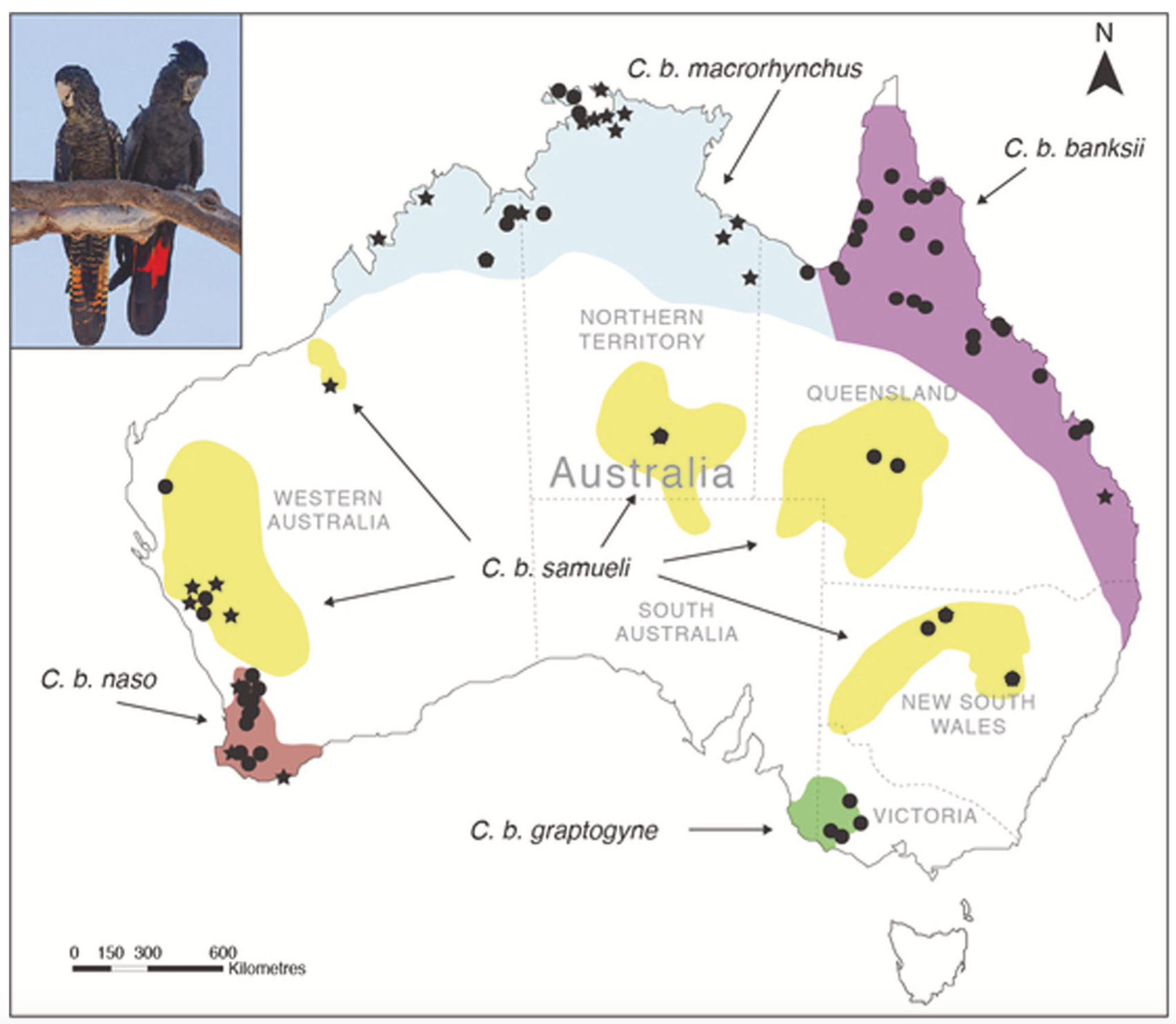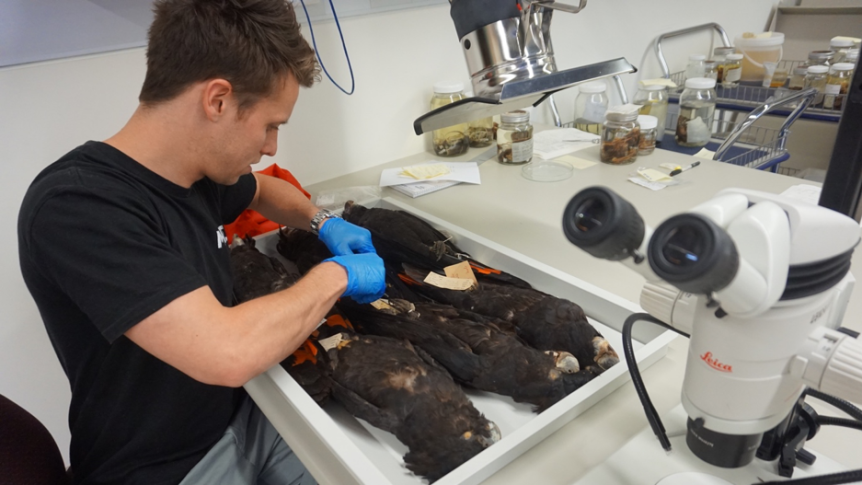A large genetic study has uncovered a new subspecies of one of Australia’s most iconic birds, the red-tailed black cockatoo, Calyptorhynchus banksii. The newly identified subspecies is unique to inland Western Australia and lives in regions spanning the Wheatbelt, east of Perth, to the Pilbara in the state’s north-west.
“Escondidus is new — it’s the subspecies’ name and it basically means ‘hidden’ because it’s been hidden in plain sight”, said lead author of the study, conservation biologist Kyle Ewart, a PhD Candidate at the University of Sydney and a Research Associate at the Australian Museum’s Centre for Wildlife Genomics, where he researches the population genomics of two commonly traded Australian cockatoo species.
Mr Ewart said they knew the population was in the region but until now had assumed they were the same as the inland subspecies. But genetic testing revealed that the newly identified Western Australia red-tailed black cockatoo is more closely related to the forest red-tailed cockatoo than to the inland subspecies.
Red-tailed black cockatoos are one of Australia’s most iconic birds
The red-tailed black cockatoo is a large black parrot with scarlet panels in its long rounded tail that is hard to miss. Females and immatures can be readily identified by their black-striped orange tail panels, horn-colored beaks, and by the buff-colored stripes and polka-dots sprinkled throughout their black plumage.

This photograph of the nominate taxon of red-tailed black cockatoo, Calyptorhynchus banksii banksii, demonstrates the morphological differences between female (left) and male (right) birds. (Credit: Patrick Tomkins / doi:10.1038/s41437–020–0315-y)
Native to Australia, this seed-eating parrot ranges across much of the continent, and is quite common in eucalyptus or casuarina woodlands. Some subspecies are mainly found in Brown Stringybark forests in south-western Victoria and south-eastern South Australia, whilst others prefer Marri, Jarrah and Karri forests in south-western Australia. Yet other subspecies are less restricted in their habitat preferences, and even occur in several urban areas and regional towns.
Like other cockatoos, red-tailed black cockatoos cannot excavate their own tree hollows, yet they depend upon them for nesting. Further, the red-tailed black-cockatoo is also targeted by the illegal wildlife trade.
There are five recognized subspecies of red-tailed black cockatoos (Figure 1), all of which can be distinguished on the basis of body size, plumage color, beak size and geographic range. The two southern subspecies — the forest red-tailed black cockatoo, _C. b. naso _and the south-eastern red-tailed black cockatoo, _C. b. graptogyne _— have small ranges that are in or near urban areas. Currently, it is estimated that there are approximately 15,000 naso (Vulnerable) and only 1,000 _graptogyne _(Endangered) individuals remaining in the wild. Thus, genetic information is greatly needed to inform successful conservation strategies for the entire species.

Fig. 1 The distribution of Calyptorhynchus banksii subspecies in Australia and localities of the individuals genotyped in this study. Circles represent tissue samples (n = 113) and stars represent toe pad samples (n = 29). The inset photo of Calyptorhynchus banksii banksii demonstrates the morphological differences between male (right) and female (left) birds. Photo: Patrick Tomkins. (doi:10.1038/s41437–020–0315-y)
Surprisingly, despite ongoing and widespread habitat destruction, there has not been a comprehensive genetic analysis of this species. As a result, it is difficult to design and implement informed conservation priorities and strategies, especially for the populations living in the northern tropical and arid regions of Australia.
So Mr Ewart and an international team of collaborators from the Australian Museum, the University of Sydney, The Commonwealth Scientific and Industrial Research Organisation (CSIRO), and the University of Edinburgh conducted a large comprehensive genomic assessment of red-tailed black cockatoos from across their entire range. The team collected samples from specimens stored for many decades in museums throughout Australia.
“We were able to extract a large amount of genetic data from these specimens, some of which were over 100 years old”, Mr Ewart said.

Lead author, Kyle Ewart, collects samples from museum specimens of red-tailed black cockatoos. (Image courtesy of Kyle Ewart / ANWC.)
Mr Ewart and his collaborators used advanced DNA sequencing and analysis techniques to (1) investigate the relationships between currently identified subspecies and (2) to help them develop effective conservation strategies.
#ecology #genomics #ornithology #science #evolution #data science
